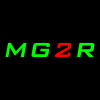Howto: create your own linux home server using Debian
-
Featured Topics
-
Topics
-
0
-
1
-
Beeswitt ·
Posted in Troubleshooting1 -
3
-
0
-
1
-
CrowTheRobot ·
Posted in Windows1 -
1
-
6
-
uncanny_mac ·
Posted in New Builds and Planning1
-


.png.255947720031a641abdac78e663b681c.png)
















Create an account or sign in to comment
You need to be a member in order to leave a comment
Create an account
Sign up for a new account in our community. It's easy!
Register a new accountSign in
Already have an account? Sign in here.
Sign In Now